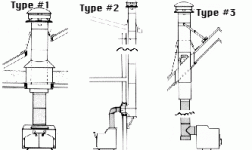Of course it says not to use a damper, since that would not be in compliance with how it was tested in the "Florida bungalow" test as dictated by the EPA.
It is always amazing how board members living in Canada, where EPA laws do not apply, want to tell us how things work with product we buy here in the USA and USE for multiple winter seasons.
Believe me, if it is cold outside, you have a straight 16+ foot chimney, most of which is in the heated home envelope, you are going to have an excessive draft problem with any certified EPA stove. The worst offenders will be the secondary air type stoves. Catalyst type stoves can burn clean at a lower temperature thanks to the platinum and palladium so they do not require the same amount of excess air.
The OP will discover the runaway behavior soon enough, come the next winter. I have experienced this behavior with a Morso and a Pacific Energy T5, both identical which is not surprising since the chimney was the same...
